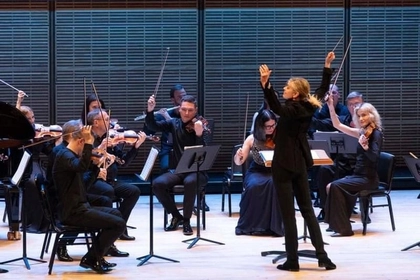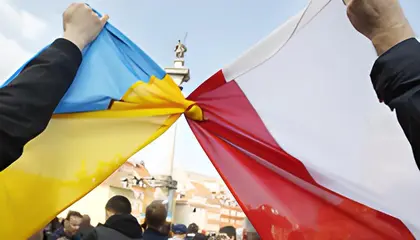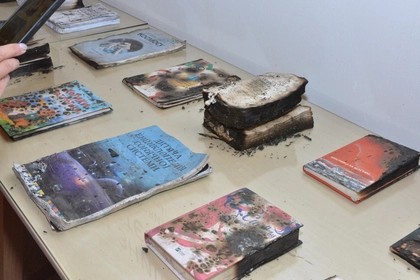A pivotal election for Poland just saw a pro-European administration come to power. Unfortunately, the electoral road was shaped into a contentious ride, resurfacing many of the historical pains between Poland and Ukraine, while undermining both country’s bonds of love, unity, and resilience forged by artists following Russia’s invasion.
Perhaps these political tensions are inevitable growing pains for two siblings who grew up in the shadow of an abusive relative. However, we need to look toward the future, and further embrace communication identifying and promoting historical conditions. Rather than relegating history to a process exclusively created by politicians, we can shape its directional narrative with art.
JOIN US ON TELEGRAM
Follow our coverage of the war on the @Kyivpost_official.
Poland and Ukraine share a complicated history. Both have committed violence against one another, and the 20th century especially was an ugly period. But since Russia’s full-scale invasion, art has been the vehicle allowing Ukrainians and Poles to discover shared historical and cultural journeys, which were present even during past times of pain.
Ukrainian President Zelensky made a trip earlier this year to the Royal Castle in Warsaw, where high-level Polish government officials showed him Polish artist Jan Matejko’s masterpiece, “Stephen Bathory at Pskov,” which depicts Russian Tsar Ivan IV (aka “Ivan the Terrible”) kneeling after a successful Polish military campaign.

Kyiv Camerata: From Carnegie Hall Back to Kyiv
The government of Ukraine exhibited work this year across Kyiv by the late US photographer Julien Bryan, who documented war crimes committed against Poles and Ukrainians by the Nazis and Soviets, along with shots capturing the beauty of Kyiv. Similar photographs from the period also appeared in Sophia Square, highlighting Polish and Ukrainian resistance to the Soviet Union.
I have witnessed firsthand the power of how these two cultures and histories communicate with one another through art. After Russia invaded Ukraine last year, a friend sent me the now iconic music video of BoomBox recording of the Ukrainian resistance song, “Oy u Luzi Chervona Kalyna.”
Having grown up in Poland behind the Iron Curtain, something powerful and ancient awakened in me when I heard this rendition – something unfelt in years. An uncontrollable urge to create took over, to express the pain, struggle, and triumph of the spirit and my people – to express the bravery of dignity, and to recognize the spirit in someone else. As I listened to the song repeatedly, my spirit communicated to the spirit of my ancestors, and the spirit of those today resisting tyranny.
Just hearing this Ukrainian folk song was enough to send me on a journey of self-discovery, wherein I also rediscovered the beautiful music of Polish composer Frédéric Chopin, and the songs he wrote while living in exile out of resistance to the Russians.
This is the power of art. It bridges generations and cultures, and gives us permission for bravery and vulnerability. It creates reference points for our transformations into better human beings and tells the story of history in real-time – beyond the handshakes of politicians, into the soul of what it means to be alive.
Recently, a friend sent me a video of a deceased war victim’s phone in the Kharkiv region ringing to “Oy u Luzi Chervona Kalyna.” Although the call went unanswered, their presence was felt in the heart of everyone else with a connection through that music.
Elections bring the temptation for zero-sum abstract thinking. Rather than “othering” one another through intellectual frameworks, we can cut to the emotions at the heart of these issues by embracing art and recognizing the conditions which create its many forms.
Agnieszka Pilat is a Polish-American artist working at the intersection of robotics, Artificial Intelligence, and classical art. She has exhibited alongside Poland’s Embassy in Washington D.C. at the Hirshhorn Museum, the Smithsonian Air and Space Center, and Strathmore Center. Her first major museum, Heterobota, will debut later this year at the National Gallery of Victoria in Melbourne, Australia.
The views expressed in this opinion article are the author’s and not necessarily those of Kyiv Post.
You can also highlight the text and press Ctrl + Enter






